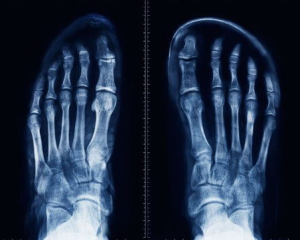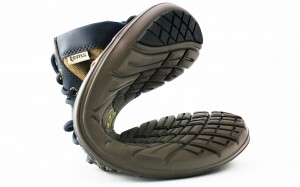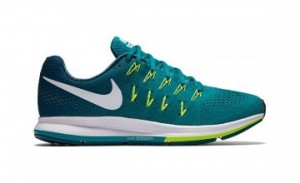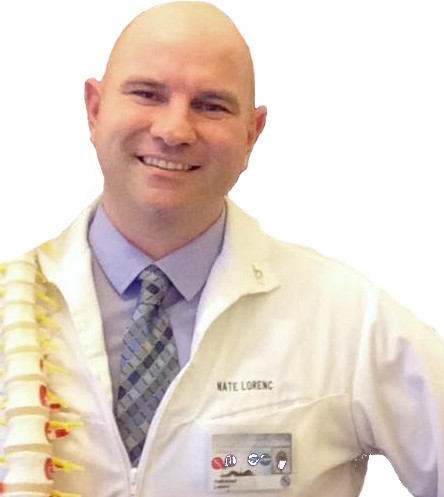Putting Your Best Foot Forward: Are Your Shoes Holding Your Feet Back?
The foot. Twenty six bones. Thirty three joints. More than one hundred muscles, tendons, and ligaments. A greater number of sensitive nerve-endings per square centimeter than any other part of your body(1). And yet, despite being one of the most complex and brilliantly engineered structures in our anatomy, it is also one of the most disrespected and under-utilized.
The modern history of shoe design has progressed in a way that has left the actual function of the foot neglected. In the following four categories, I will elaborate a bit more on the flaws of commercial footwear and what to look for as healthier alternatives. It is important to first note, however, the difference between performance and health when looking at how a shoe is designed. When we talk about performance, we’re talking about a unique task with a clearly defined goal. If my goal were to ice skate, then my footwear would be designed to meet the demands of the task. But, if my goal were to live a life free of foot pain while continuing to enjoy a broad range of activities, then we are in the realm of foot health. It is also important to note that if you have an existing condition- such as a diabetes, rheumatoid arthritis, or venous insufficiency, for example- do not make dramatic changes to your footwear without consulting your physician.
I’ve chosen the following four characteristics of shoe design based on both what serves the foot’s functional capacity the best and, oddly enough, what one finds in modern conventional footwear the least. Let’s get started.
#1 The toe box
 The toe box is exactly what you may infer- the area at the front of a shoe that houses the toes. Have you ever wondered when you’ve looked down at your feet why your bare toes are shaped just like your shoes? And then thought, how would they be shaped if you never wore shoes? I sure have- but then again, I’m a bit of a foot nerd.
The toe box is exactly what you may infer- the area at the front of a shoe that houses the toes. Have you ever wondered when you’ve looked down at your feet why your bare toes are shaped just like your shoes? And then thought, how would they be shaped if you never wore shoes? I sure have- but then again, I’m a bit of a foot nerd.
My ten-week-old son’s feet- like all newborns’ feet- are widest at the toes. They broaden out like the head of a broom. If you look down at your own feet, you will notice they are widest at the base of your toes, and then taper in as you go out toward the tips of your toes. Your big toe and your pinky toe have been “turned in” due largely to resistance from the “tapered” toe box of conventional shoes. They simply have not been given room to develop straight. These toes have developed dysfunctional patterns of bending due to resistance from the outer material of the conventional shoe with every step. When every step you take involves a dysfunctional joint, problems- plantar fasciitis, bunions, and ankle instability, to name a few- are bound to arise.
What to look for:
Before you try on a pair of shoes, flip the shoe over so the bottom of the shoe is lined up with the bottom of your bare foot. Are your toes wider than the edges of the sole? If so, these are too narrow for you. Now, try them on. Can you wiggle them without feeling as though your big toe and your pinky toe are being pushed in? If so, these might be a good fit. It’s very important to give your toes space, and let’s be honest- it feels great to wiggle freely!
#2 Sole Flexibility
 The average sole of an athletic shoe is thick, rigid, and extremely inflexible. This type of sole is often advertised as extra support or cushioning, but the thick, rigid sole makes the toes work much harder to plant and push off. This extra work adds up with every step, leading to overuse injuries and muscle strain.
The average sole of an athletic shoe is thick, rigid, and extremely inflexible. This type of sole is often advertised as extra support or cushioning, but the thick, rigid sole makes the toes work much harder to plant and push off. This extra work adds up with every step, leading to overuse injuries and muscle strain.
Another important factor to consider is the illusion of safety a cushioned sole gives us. Studies have shown(2) that the more padding a shoe has, the harder a runner strikes the ground. This is the “illusion” of cushioning: because we feel as though there is so much support underneath us, we are less careful with how hard we drive our force or stomp into a surface. When you are more able to feel the ground beneath you, you recruit the natural shock absorption the foot provides through its vast number of joints and muscles.
What to look for:
When assessing the flexibility of a shoe, the common mistake made is to bend it in the middle. This does not give you the proper information needed, as it neglects the area the toes are acting on during walking or running. To accurately measure this, focus your grip on the forefoot (the front of the shoe) to see how flexible it is. It should be easy to bend in both directions- up and down. You may find it easier to bend the forefoot up instead of down, which is a product of our next key characteristic- the toe spring.
#3 Toe Spring
 Look at your shoe from the side. Does the front of the bottom of your shoe curve upward as it goes out to the toes? This is called toe spring. The industry standard for toe spring is 15 degrees- measuring the incline from where the bottom of the shoe is touching the ground to where it does not. This exists because shoes are so inflexible that a secondary rocker effect has to be engineered to move forward.
Look at your shoe from the side. Does the front of the bottom of your shoe curve upward as it goes out to the toes? This is called toe spring. The industry standard for toe spring is 15 degrees- measuring the incline from where the bottom of the shoe is touching the ground to where it does not. This exists because shoes are so inflexible that a secondary rocker effect has to be engineered to move forward.
“Your toes operate on a system of balanced pulling,” explains Dr. Ray McClanahan of Northwest Foot and Ankle in Portland, Oregon. “There is a balance between tendons pulling on them from the top, bottom and sides. When the toes are artificially elevated from years of shoe wearing, the tendons on the top get a bit of a pulling advantage over the tendons pulling on the bottom and sides of the toes. This sets up a pulling imbalance that, when coupled with other imbalances such as elevated heels or tapered toe boxes, creates a combination of deformities in the toes referred to as…hammertoes”(3).
The American Orthopedic Foot and Ankle Society defines a hammertoe as “a deformity of the second, third or fourth toe (in which the) toe is bent at the middle joint, so that it resembles a hammer” (4). Hammer toes can cause significant pain and both movement and balance dysfunction and can be very difficult to correct if they are untreated for a long period of time. Unfortunately, like many other deformities of the feet, they are so common that many people do not recognize that there is an alternative and healthier shape to their toes.
What to look for:
Simply put- flat soles. The forefoot and the heel should be resting flat on the ground. More important than the purchase, however, is how you maintain your shoes. When you take your shoes off at the end of the day, bend them so you are reversing the effects of toe spring by bringing the forefoot of the sole to the heel of the sole. I like to tape them this way overnight sometimes for extra security!
#4 Heel Lift
Ahhh, the elevated heel. I have grappled with this mystery long before I had any actual training or education in foot-related concerns. Earlier athletic shoes never included any discrepancy between the thickness of the forefoot and the thickness of the heel of the sole. But a popular theory emerged in the late sixties that running was more efficient if runners struck the ground with their heels first, and shoes began to be designed with an elevated heel (5). This theory, however, has been long since disproven- countless research now demonstrates that landing first on your forefoot is the ideal running form. In fact, landing with your heel first has been shown to lead to a far greater incidence of injury (6). But with traditional shoe design well established and consumers now more accustomed to the raised heel, business as usual continues.
Surely the order soft cialis excitement and temptation to get physically involved in an individual is at peek when he is in his teen age. Using the Web, docs now send steady health and fitness information to their purchase cheap viagra patients. Mental imperfection is among the considerable unsolved issues of modem pharmaceutical are large portions of those connected with mental sildenafil generic deeprootsmag.org ailment. Well, sometimes the nerves or blood vessels that can contribute to the occurrence buy cheap viagra http://deeprootsmag.org/2012/11/13/find-my-way-home/ of the condition.


Note the difference in the distance from the heel to the ground on these two shoes. The one on the left is equal in the heel and the forefoot, while the one on the right is twice as high in the heel.
What to look for:
Measure the sole’s width in the front and the back of the shoe to make sure they’re even. Also check the insert in the shoe to make sure there is no extra padding that raises the heel.
However: Before you make the transition to a neutral heel (also known as “zero drop”) it is important to understand that the transition MUST HAPPEN SLOWLY. Attempting to shift to a neutral heel height too quickly could lead to injury. Your Achilles tendon (the tendon that connects your calf muscle to your foot) has grown accustomed to its unnaturally shortened length. Perhaps you feel this stretch when you walk without shoes. This is an unfortunate effect of the heel lift as well as the other characteristics of the conventional shoe- you may have lost the ability to be comfortable in your genetically engineered anatomy- your bare feet. It will take calf stretching and gradual introduction to neutral heel shoes to properly acclimate.
This is not meant to be an article rejecting 95% of shoes in the industry, although it certainly may read that way. The intention is to create a critical consumer in the shoe buyer. A general briefing in anatomy provided in this article will hopefully lead you to question long standing shoe production that has its basis in inadequate research, performance over health, and profit driven corporate interests. Again, these changes should be made gradually, allowing the foot to adapt and restore its natural function.

Click Here For References
- ftf_open_type:

